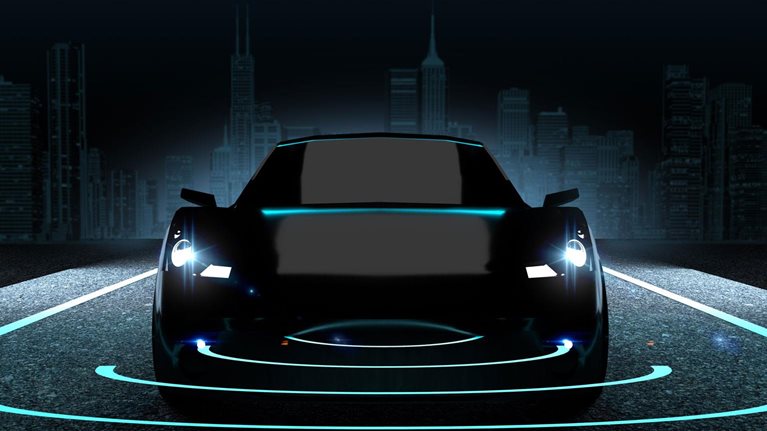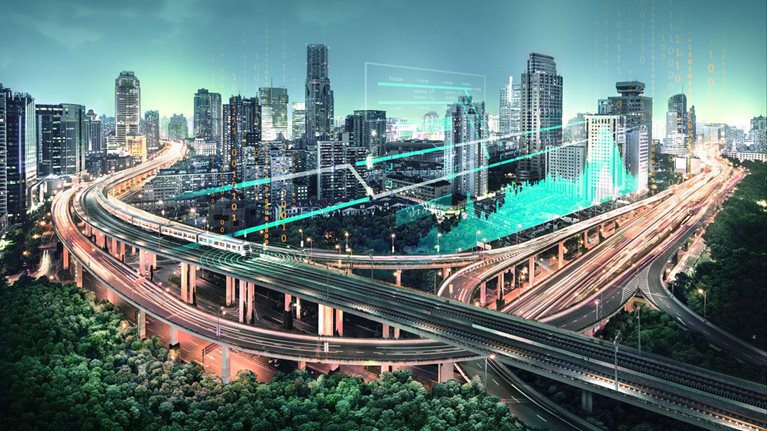In ten years, transportation in the United States will look far different than it does now. Already, vehicle-sharing and electrification are widespread; and autonomous vehicles (AVs) and the Internet of Things are poised to make even bigger waves.
Stay current on your favorite topics
Physical infrastructure will evolve to reflect this. For instance, roads could be stacked with lanes dedicated to specific types of traffic, such as commuter cars, commercial vehicles, AVs, and bicycles. Drones will deliver goods to homes and businesses, and the number of charging stations constructed for electric vehicles will surge.
These changes are imminent—and they have sweeping implications for the entities that govern transportation infrastructure. If the face of transportation will change in just a decade, and large transport infrastructure projects can take more than a decade to complete, then departments of transportation (DOTs) have little more than three to five years to adapt. Those DOTs that focus on older travel models will be unprepared to serve new kinds of demand. They will also be slower to convert growing data sets into actionable plans and projects that further support these changing trends. Conversely, those that proactively embrace change have the opportunity to shape the future of transportation as well as urban, suburban, and rural development.
Adjusting to these rapid advances and providing effective, next-generation solutions requires agility and radical innovation. This kind of disruption can challenge the culture of DOTs—many of which are required to focus on compliance and reducing risk, not encouraging experimentation. Furthermore, DOTs rely heavily on their legislatures and stakeholders to deliver on their plans. A lack of support from these stakeholders affects their funding and operating model. These challenges make it difficult to adapt quickly or act decisively to execute broad transformation.
Yet transformation will be necessary for DOTs to deliver safe, reliable, and integrated infrastructure. No blanket solution exists, as each DOT is organized and governed differently. However, we see a shared vision and set of guiding principles that all DOTs can aspire to follow in paving their own path.
The current plight of the typical DOT
While some DOTs are already adapting to impending change, it’s possible that some are still primarily focused on meeting their present budgetary needs and securing funding to solve traditional transportation problems such as maintaining highways or building bridges. These DOTs may not have the capacity to invest in new innovation. Similarly, public stakeholders such as metropolitan planning organizations (MPOs) are just as central in the overall planning process as the states and often have different priorities.
Would you like to learn more about our Capital Projects & Infrastructure Practice?
One key reason for favoring conventional solutions is that the DOT workforce, although changing, is still heavily dominated by civil engineers. While this talent will always be critical to the success of large civil works organizations, there is always a risk of groupthink when an organization is mostly composed of people with similar training and problem-solving approaches. Additionally, many DOT functions operate in silos.
The life of a project—from planning to finance to engineering to right-of-way and permitting to construction—is excessively linear. Each group manages its own portfolio with too little cross-function integration. The combination of these factors can limit a DOT’s ability to evolve beyond its existing model.
A road map to the DOT of the future
To acquire the necessary skills and transform its practices, a DOT must implement changes to five core capabilities: strategy, portfolio planning, its resources model, project planning and delivery, and performance measurement.
1. A strategy that supports funding priorities and enables agility and innovation. DOTs must work closely with their partners—such as MPOs and local municipalities—to educate and inform the public about the impending changes to the world of transportation. This will serve two purposes: to garner broad support and to instill urgency in public officials to unlock funding for programs needed to propel DOTs through this evolutionary process. DOTs can also partner with other public and private organizations to gather and fund innovative ideas.
One leading DOT created a technology task force to uncover new tools and strategies that would enhance the state’s transportation system while positioning the state as an economic and technological leader. The task force consults with industry experts and leading institutions to identify impactful emerging technologies, while conducting research to build a fact base that informs change.
2. Portfolio planning that includes scenarios for all potential transportation solutions, not just conventional roads and bridges. The problem of congestion creates a particularly urgent need for new scenario planning—one that is felt most acutely in cities. This planning is not just about building more roads or wider lanes; it’s about envisioning scenarios that incorporate specific new solutions such as AVs, bicycles, and ride sharing.
DOTs would benefit from an integrated portfolio that allows stakeholders to see, track, and understand all the work being funded, enabling real-time decision making. This portfolio could improve scenario planning, allowing funds to be used more efficiently to find the best solutions to current and future problems. DOTs could also work more closely with their cities and MPO partners to develop a clearer understanding of the city’s overall socioeconomic priorities—bolstering the logistics industry, for example, or preventing suburban flight—and how transportation can inform and achieve those goals.
3. A resources model that creates the human engine to fuel innovation. DOTs will have to evolve from a predominantly engineering-focused culture to one that integrates classical engineering, new engineering skills, technology capabilities, general problem solving, and financial acumen. To succeed, they’ll need a talent acquisition and development plan that speaks to a generation of innovators interested in making a positive impact on their communities. Of course, these innovators will still need traditional engineering teams. ButDOTs of the future will rely heavily on data scientists that analyze disparate information streams and develop solutions that incorporate AVs and other emerging mobility trends.
They may also create teams of programmers that develop apps to communicate live traffic information to drivers’ cars and mobile devices. The key will be for DOTs to provide the right organizational structure that successfully blends new skills with the old to drive fruitful outcomes.
4. Project planning and delivery that produces effective solutions quickly. For today’s DOTs, delivering on time and within budget is at times simply an exercise in managing contractors and getting plans out the door. Technology will change this process with digital solutions that develop more accurate cost and schedule estimates, incorporate data analytics from hundreds of other similar projects, and codify on-the-ground experience into true organizational knowledge. Digital tools can also monitor equipment and crew efficiency, which in turn will transform contractor management and boost productivity. Embracing these technologies may seem daunting for some of today’s DOTs, but those that do so will reap significant value.

Voices on Infrastructure
Our quarterly compendium on infrastructure and capital projects
While full digital transformation is not yet a reality for many DOTs, some are moving in the right direction. One DOT launched a portfolio and project management initiative that consolidates multiple management systems into one standardized platform. Moving from disparate systems to a single repository of information creates efficiency, accuracy, and transparency that improves the agency’s decision-making and forecasting abilities. Such a system can also lay the foundation for future integrated solutions and apps, equipping DOTs to embrace long-term digitization.
5. Performance measurement that supports the vision. Performance management today is often too focused on tracking engineering errors, cost overruns, and delays. To support long-term evolution and growth, the sector will need to move away from these metrics and consider the broader goal of a better transportation system. For example, DOTs should be evaluated against the efficacy of their solutions, not the money they disburse, and chief engineers should be rewarded based on their improvements to road networks and other transport solutions. A number of DOTs are already at the forefront of this evolution, but much more needs to be done.
Looking forward
Today, a United States without interstate highways seems unimaginable—but it was not long ago that DOTs were preparing for and acclimating to nationwide transformation. Radical innovation will be challenging; yet it has been done before, and it can be done again. DOT leaders should acknowledge that the imminent changes to transportation are about to redefine their existing structure and models. They should be visionary, pragmatic, bold, and courageous in the years ahead, and stakeholders must coalesce to support them in their transformation. With these measures firmly in place, DOTs can act today to establish a sturdy foundation for the future.


